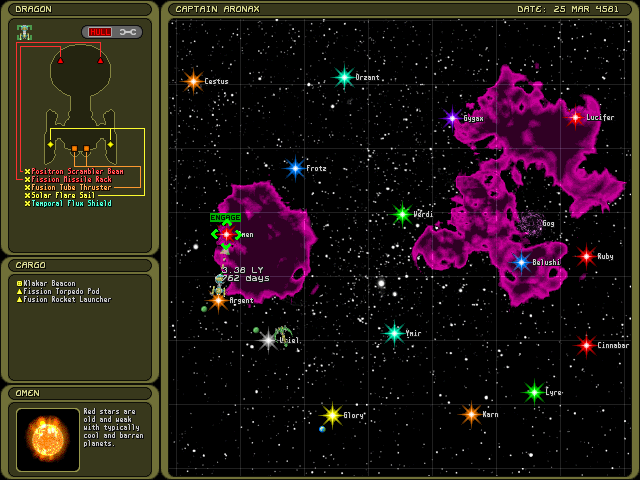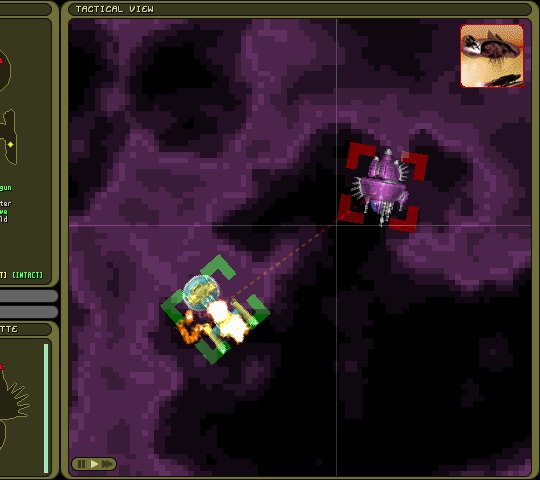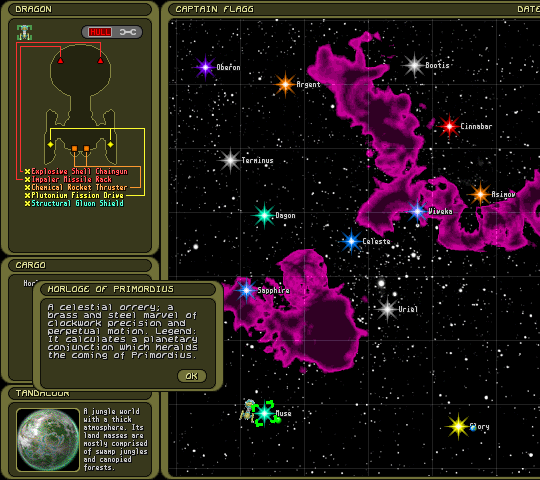


Strange Adventures in Infinite Space (2002)
One of the first roguelike-likes (or, as video-game-foliage calls them, rogueloves): Take the ideas of a roguelike, but instead of exploring a fantasy dungeon you’re exploring a procedurally generated star map.
Unlike the grid-based map of Rogue, the map is primarily node-based (with black holes and nebulas complicating the routes). It has a lot of the elements that later games like FTL would build on. Each star is its own little island of modular content, with items to discover and enemies to fight. The contours of the invisible generation algorithm not only determine the layout of the stars, but also randomly shuffle the items that are the key to progression in Strange Adventures in Infinite Space’s emergent systems.
Digital Eel has made the game available for free, and released its source code, though it’s a bit tricky to get it to run on recent systems. They have also made two sequels which I’ll probably mention here in due time: Weird Worlds: Return to Infinite Space, and Infinite Space III: Sea of Stars, which is currently in Early Access.
